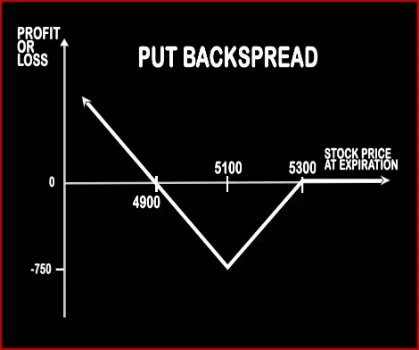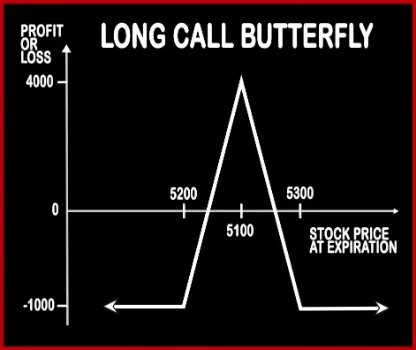Compare Strategies
| PUT BACKSPREAD | LONG CALL BUTTERFLY | |
|---|---|---|

|

|
|
| About Strategy |
Put Backspread Option StrategyIf the trader is bearish on market and bullish in volatility, he will implement this strategy. However the trader can be neutral in nature i.e. indifferent if the market moves in either of the direction, this strategy will make profits, but uptrend will give a capped income than downtrend which will give unlimited returns. |
Long Call Butterfly Option StrategyA trader, who is neutral in nature and believes that there will be very low volatility i.e. expects the market to remain range bound, will implement this strategy. This strategy involves selling of 2 ATM Call Options, buying 1 ITM Call Option & buying 1 OTM Call Option of the same expiry date & same underlying asset. The difference between the strikes sho .. |
PUT BACKSPREAD Vs LONG CALL BUTTERFLY - Details
| PUT BACKSPREAD | LONG CALL BUTTERFLY | |
|---|---|---|
| Market View | Bearish | Neutral |
| Type (CE/PE) | PE (Put Option) | CE (Call Option) |
| Number Of Positions | 2 | 4 |
| Strategy Level | Advance | Advance |
| Reward Profile | Limited | |
| Risk Profile | Limited | |
| Breakeven Point | Upper Breakeven = Higher Strike Price - Net Premium, Lower Breakeven = Lower Strike Price + Net Premium |
PUT BACKSPREAD Vs LONG CALL BUTTERFLY - When & How to use ?
| PUT BACKSPREAD | LONG CALL BUTTERFLY | |
|---|---|---|
| Market View | Bearish | Neutral |
| When to use? | This strategy should be used when you're expecting no volatility in the price of the underlying. | |
| Action | Sell 2 ATM Call, Buy 1 ITM Call, Buy 1 OTM Call | |
| Breakeven Point | Upper Breakeven = Higher Strike Price - Net Premium, Lower Breakeven = Lower Strike Price + Net Premium |
PUT BACKSPREAD Vs LONG CALL BUTTERFLY - Risk & Reward
| PUT BACKSPREAD | LONG CALL BUTTERFLY | |
|---|---|---|
| Maximum Profit Scenario | Adjacent strikes - Net premium debit. | |
| Maximum Loss Scenario | Net Premium Paid | |
| Risk | Limited | Limited |
| Reward | Unlimited | Limited |
PUT BACKSPREAD Vs LONG CALL BUTTERFLY - Strategy Pros & Cons
| PUT BACKSPREAD | LONG CALL BUTTERFLY | |
|---|---|---|
| Similar Strategies | - | |
| Disadvantage | • Due to limited lifespan of call options, you can lose the premium paid. • Limited profit which is bound in a narrow range between the two wing strikes. | |
| Advantages | • Under this strategy, a trader can book profit even when there is not volatility in the market. • Limited risks to the net premium paid. • This strategy allows you to gain more profits by investing less and limiting your losses to minimum. |